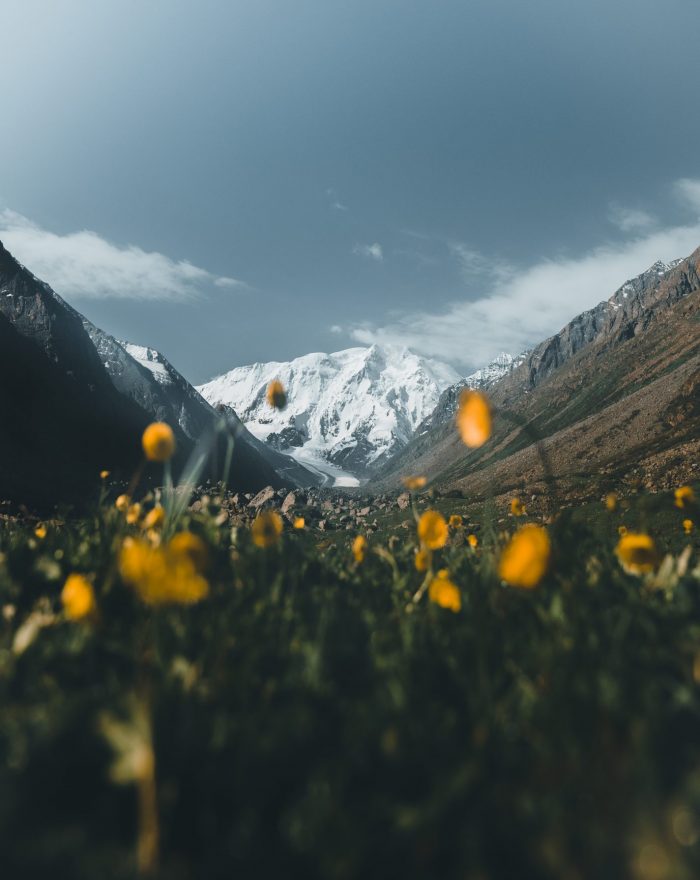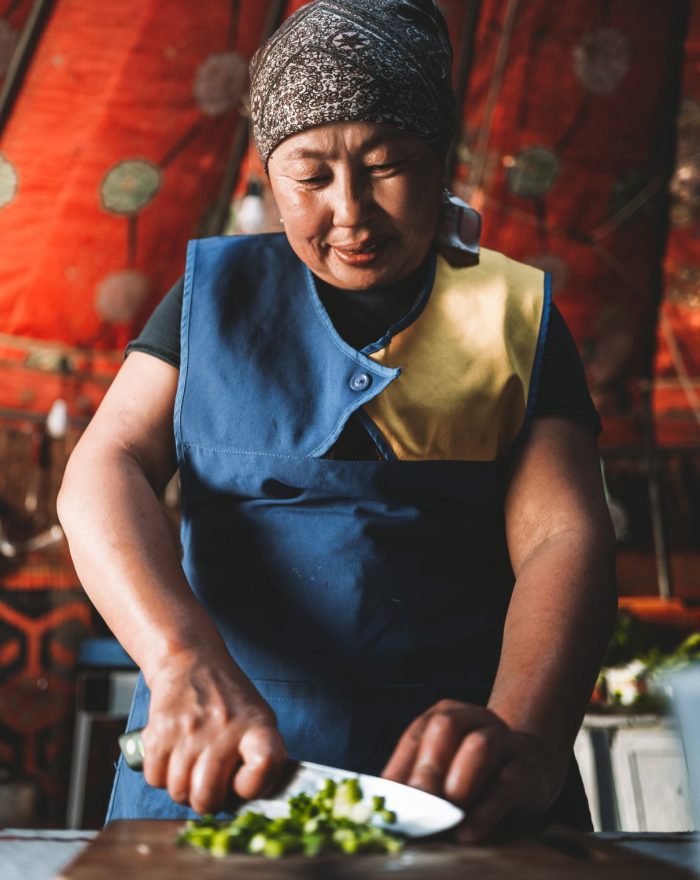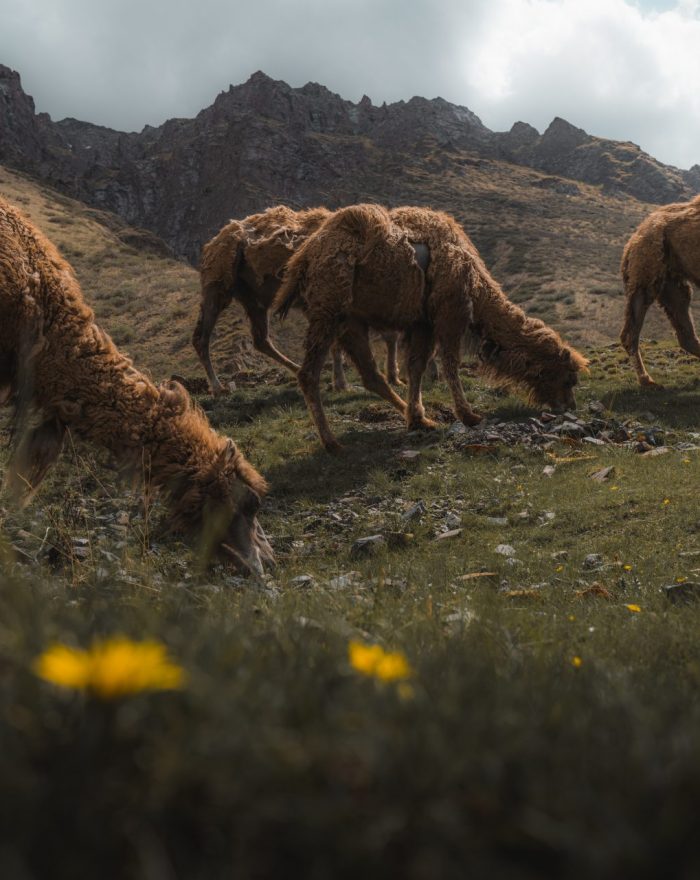KYRGYZSTAN
DISTANCE
1500 Km
DIFFICULTY (1-10)
8
DAYS
17
HIGH POINT
4200 Mt
TREKKER
Pietro Ienca
Luigi Chiurchi
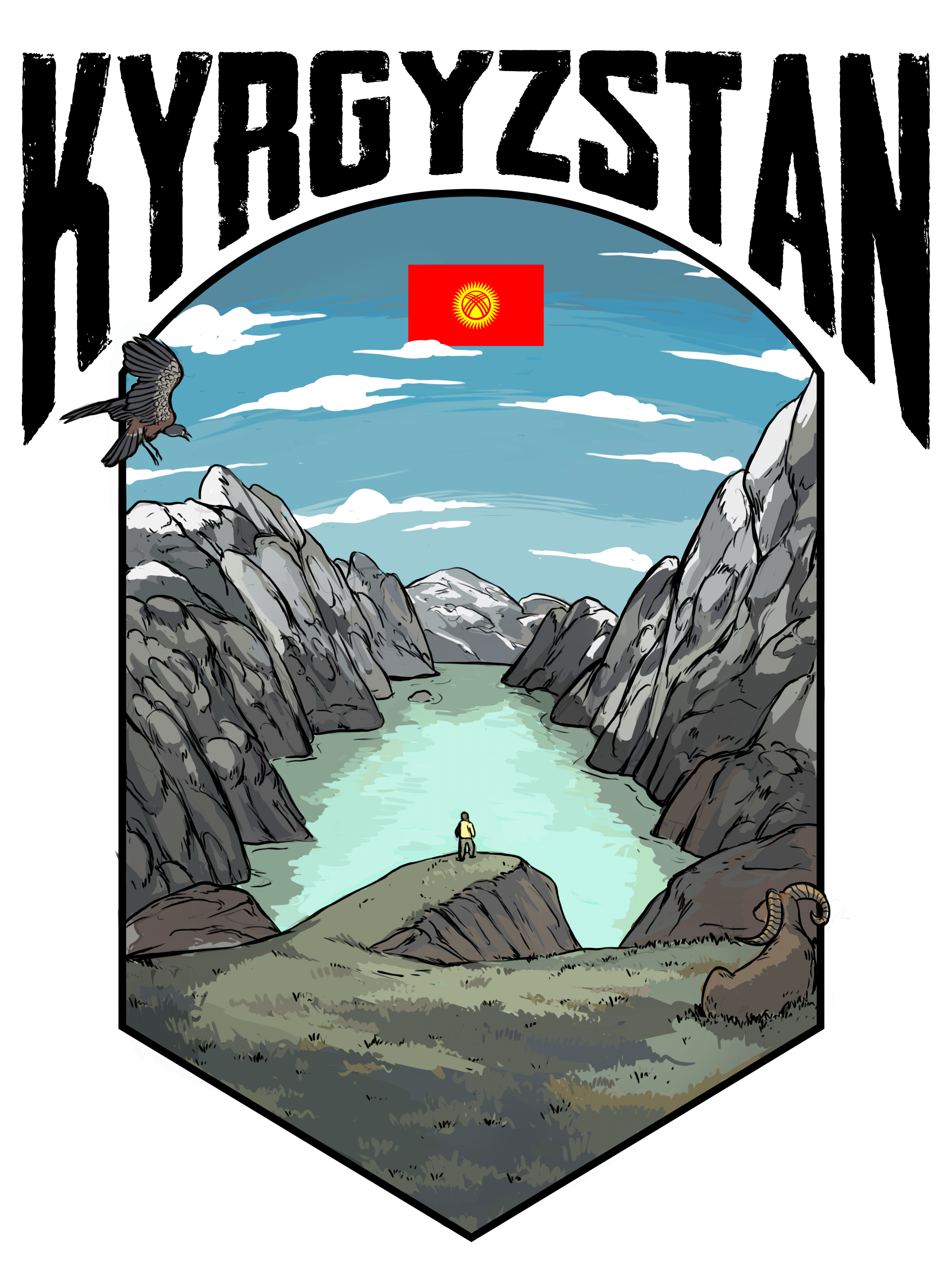
A wild exploration in Central Asia
Kyrgyzstan is a country that is rarely heard of in the West,
due to its geographical remoteness, but also because of its isolation from the main tourist flows. We wanted to explore it for this reason, looking for a primordial beauty that is difficult to see today, in the globalized society of noise and crowding. Kyrgyzstan is located along the route of what was once the ancient Silk Road, which linked the East to the West since Roman times. An area equal to that of Italy is now inhabited by only about six million people, making the Kyrgyz territory largely untouched.
Inside it you can find mountains that exceed 5000 meters in altitude – some of which are still unnamed – animals in danger of extinction, almost unexplored valleys, steppes and glaciers, shepherds’ camps and grassy hills. We spent seventeen days of travel here, nestled between the Tien Shan mountain range (on the border with China) and the almost alpine landscapes on the border with Kazakhstan. Telling such a wild territory through our photographs and videos has been an honor and a fortune, which we will keep in our hearts for a long time.
But let’s go in order.
The expedition included two different tours within the country, accompanied by two local guides: Timur, of Kyrgyz ethnicity, and Fara, of Uyghur ethnicity. A Toyota Land Cruiser transported us along rough and often difficult roads. It was 1500 km of adrenaline. After landing in Bishkek, which is the nation’s capital and cultural center, we embarked on our first loop, which took us through a remote area bordering China’s autonomous region of Xinjiang.
The first target was the Son-Kul Lake, a lake located at 3,000 meters above sea level. There we slept in a yurt, a typical construction used by the nomadic populations of the Central Asian highlands.
The components of this structure were completely sustainable, having used buffalo skins rather than plastic. There is certainly no shortage of high mountain lakes in this region. One of the most fascinating of all is Kel Suu Lake, at 3500 meters above sea level. The rocky mountains plunge into the water mirror from all sides, making the landscape unique. With the drone we tried to capture the shy light of that morning, after spending the night in a tent in a rather cold climate.
The impression you get when observing the place from above is that you are in the presence of a fjord. The almost total absence of human presence guarantees the settlement of a rather rare fauna. In fact, it was there that we spotted some griffon vulture nests, a bird of prey capable of reaching a wingspan of more than two and a half meters. But they weren’t the only animals we observed along our journey. At 4200 meters above sea level, a few days later, we were able to take back some Marco Polo sheeps, particular ungulates that populate this stretch of the ancient caravan routes traveled by the Venetian merchant. There are a few thousand of them in the world and they represent delicious prey for the unobtainable snow leopards.
In another situation, we were instead delighted by the passage of a herd of yaks, wisely managed by a shepherd on horseback. These cattle, also typical of the Tibetan region, often have large horns and a particularly thick coat. In the diet of the local population, they are extremely important.
The valleys in which these meetings took place are cloaked in an atmosphere of continuous discovery and inviolability; the border areas between Kyrgyzstan and China still maintain Soviet Union references, starting with the checkpoints that mark the border. We had to overcome some of them, but in another juncture we are boundless by simply crossing a precarious wooden bridge, which crosses the Uzanggu Kuusk river, used as a natural border. These are areas of substantial geopolitical vacuum, where the mountain ridges and nature still dictate the rhythms of the entire region.
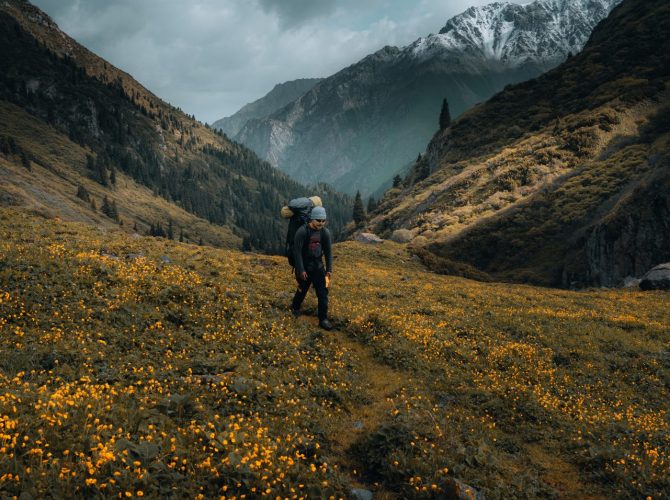
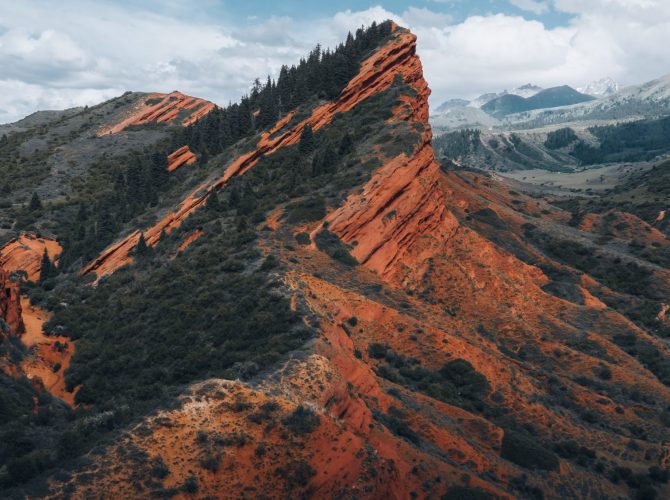
And speaking of mountains, here are the two giants that most impressed us:
Dankova Peak and Karakol Peak. The first reaches an altitude of 6000 meters (5982 meters above sea level), while the second reaches 5216 meters above sea level. Both gave us some of the most exciting moments of the whole experience, as well as several video footage. For two nights we spent the night between three thousand and four thousand meters above sea level, keeping the mountains as a constant background. As the sun went down, we decided to light a fire to warm ourselves at the foot of the glaciers.
There were four of us. Four people on the bare surface of the Earth. These were magical moments, full of life and rediscovered simplicity. Then we entered the province of Issyk-kul, one of the most important in terms of landscape. In the Karakol Valley, which is home to the mountain of the same name, we had the opportunity to experience the incredible tourist potential that the entire area could have for trekking enthusiasts. Rivers, snow, ridges and rocky conformations paint picture scenes with constancy, filling your eyes with beauty. We were also surprised by some snowfalls, which added further poetry to the moment.
In stark contrast to these natural environments, we then moved into a territory with Martian features, with the red earth excavated by rains and winds. The so-called Forgotten Rivers fill the numerous rocky canyons every time a disturbance discharges large quantities of water. This scenario reminded us of the Landmannalaugar area in Iceland, which we had to explore a couple of years earlier.
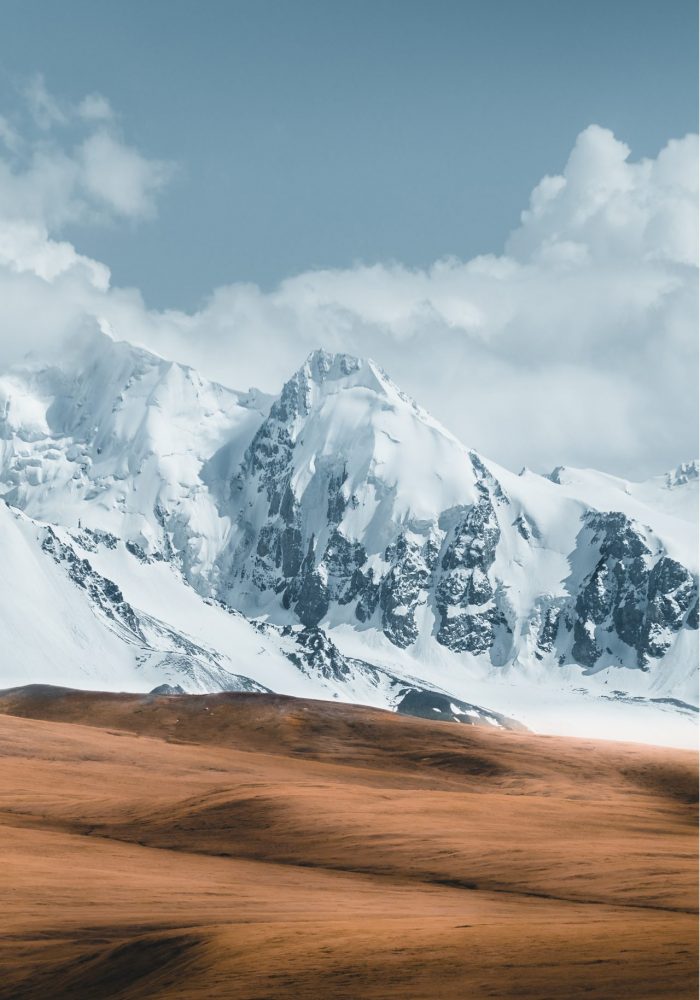
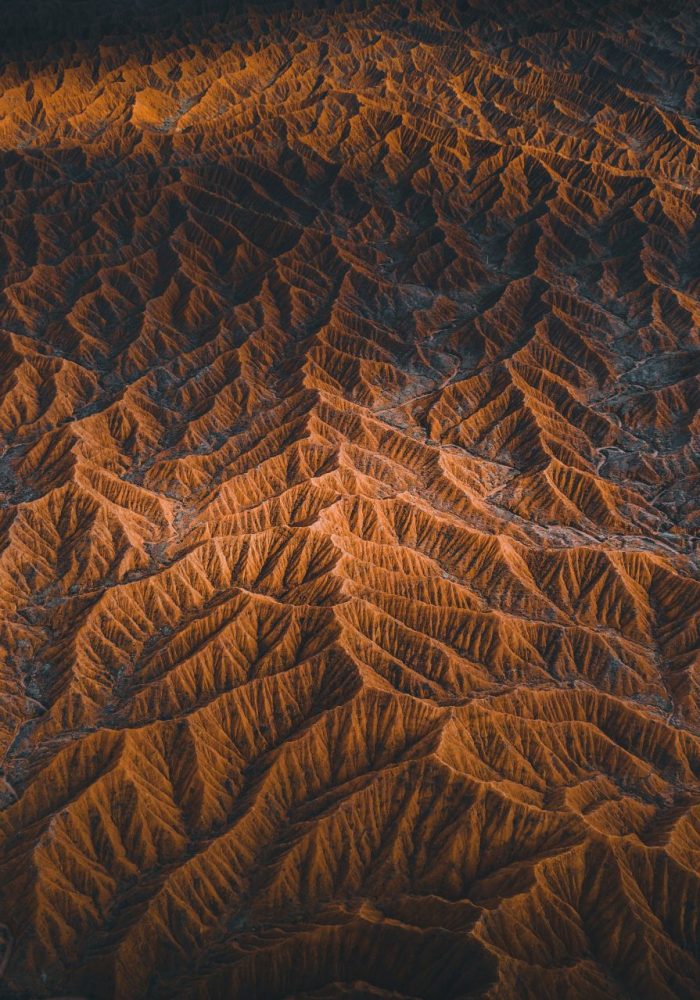
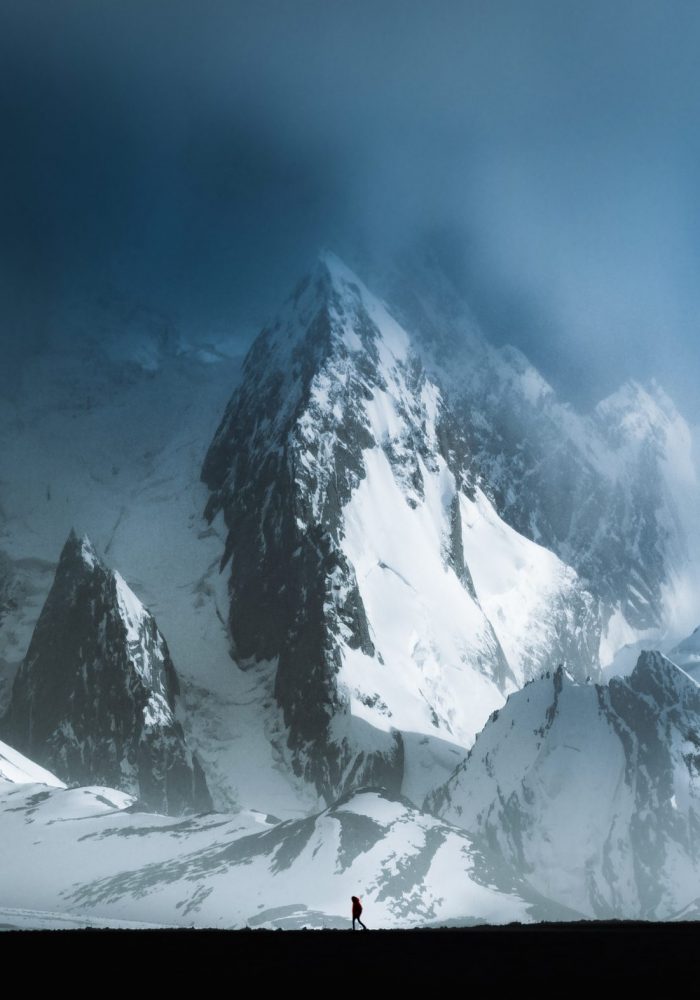
The second part of our travel,
it was punctuated by a series of short hikes on the northern side of the country, along the border with Kazakhstan. Here the profiles of the landscape soften, with green meadows with spring connotations that recall our Alps. In short, the variety of views that can be appreciated at these latitudes is astounding, if you think of a country that is difficult to locate on the map by international tourist agencies.
We believe that Kyrgyzstan has a lot to offer, but we are also jealous of what we were able to enjoy, in the conditions of absolute authenticity of May 2021. The hope is that Bishkek will be able to take a decisive path of tourist development that manages to preserve what is marvelous in this Central Asian setting.
It is not easy to ensure sustainable growth capable of embracing the general public, where entire valleys today register the visit of dozens of people over a whole year. What we have been able to see, however, cannot leave us indifferent: this slice of the world has touched something inside us, for the wild authenticity it has been able to give us.
For 2022 we will undertake to create a path in collaboration with local tour operators, so as to be able to accompany other people who want to explore a corner of paradise on earth. In the meantime, through images, videos and words, we hope to be able to convey what we have experienced in these seventeen days of adventure.
- Kyrgyzstan offers an incredible variety of landscapes. However, being a country that is still largely wild, it is necessary to rely on expert local guides, so as to be able to explore the territory safely.
- The country has an ancient and little known history, for centuries the capital Bishkek represented an important stage along the Silk Road, which united East and West, bringing together cultures, traditions, languages, men and goods.
- Regarding acccomodation facilities, Kyrgyzstan needs to invest a lot in this regard. Undoubtedly an exciting experience is to sleep in a yurt, a sort of tent built with buffalo skins, used by local nomadic populations.
- Meat, vegetables and cheeses, these are the foods that make up a large part of the Kyrgyz diet. We got to taste khimhyz, that is fermented horse milk. It is a typical drink of the place.
- We relied on local guides, who accompanied us through the country,allowing us to enjoy the experience in safety. We would like to point out to you to consult the website: https://visitkarakol.com/

